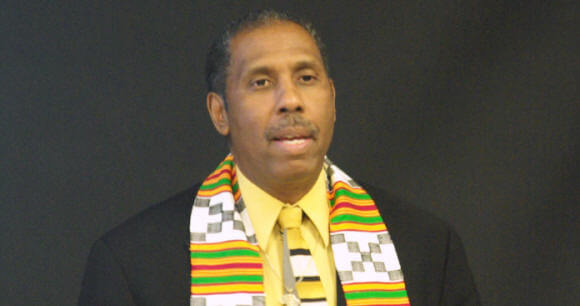A Different Approach to Teaching our Young Black Men
- Blog Updates, Hear 2 Help You, Standard Blog
- black boys, blackmen, community, education, Knowledge, learning, strategies, teaching, tips, young black boys
- November 14, 2018
A Different Approach to Teaching our Young Black Men
Today, we are tackling a topic that is of most important to our community. I thought that the best way to handle it was to introduce some of the issues, and then provide solutions for educators who work with our young black men in the community.
[wonderplugin_video iframe=”https://www.youtube.com/watch?v=OZVVkHoNi4g” videowidth=600 videoheight=400 keepaspectratio=1 videocss=”position:relative;display:block;background-color:#000;overflow:hidden;max-width:100%;margin:0 auto;” playbutton=”http://hear-2-help.com/wp-content/plugins/wonderplugin-video-embed/engine/playvideo-64-64-0.png”]
The following excerpt is taken from his biography. Click here to read this in full.

Born on June 15, 1953, in Chicago, Dr. Jawanza Kunjufu—who adopted a Swahili name in 1973—credits his parents, Eddie and Mary Brown, with affording him the encouragement, discipline, and stability that would later become the core of his program for the renewal of black society.
Dr. Kunjufu attended Illinois State University at Normal and received a bachelor of science degree in economics in 1974. Ten years later he finished a doctorate in business administration at Union Graduate School.
Although all aspects of the African American experience occupy Dr. Kunjufu’s attention, but the main thrust of his work has been directed toward improving the education and socialization of black youths.
Despite his formal training in business, Dr. Kunjufu was early on fascinated—and appalled—by the educational system for black students in America, and from 1974 onward he began delivering lectures and workshops treating the problems facing black educators.
Dr. Kunjufu eventually decided to make educational consulting his career; in 1980 he founded a publishing and consulting company in Chicago called African American Images.
The birth of Kunjufu’s two sons, Shikamana and Walker, further focused his energies on the contradictions inherent in black education and especially in the education of young black males.

The fruit of these observations was the 1982 publication of Countering the Conspiracy to Destroy Black Boys—probably Dr. Kunjufu’s best-known book—in which he analyzes and offers alternatives to the frequent failure of black males in school and in the marketplace.
In Dr. Kunjufu’s view, the “conspiracy” against black males is fundamentally rooted in the need of a white minority to control the world’s far greater population of people of color; but in addition to overt racism, Dr. Kunjufu includes in his indictment all teachers, parents, and especially adult black males who fail to provide the support and discipline needed to keep black boys off the streets and in the classroom.
Dr. Kunjufu sees black males as caught in a self-perpetuating cycle of failure, in which the absence of stable, successful adult role models ensures that young blacks will do poorly in school, turn to street life, and father yet another generation of boys without adequate male role models. The net result is the prevention of black males from attaining positions of social and economic power.
Dr. Kunjufu created his own curriculum titled, Self-Esteem Through Culture Leads to Academic Excellence (SETCLAE); which is a model curriculum that provides a mechanism through which educators, youth workers, and parents can teach their children the positive aspects of their cultural heritage and simultaneously increase their self-esteem and their desire to excel.
He even gives us 7 reasons why we should use the curriculum.

We as educators have to develop Innovative and relative curriculum styles and Dr. Kunjufu’s book, 200+ Educational Strategies to Teach Black Children is definitely one of those pieces of literature aimed at assisting us all.

On Page 3, Kunjufu tells us that he wrote this book because the ever-growing…
academic achievement gap between African-American and White Students.
African-American & Latino children, especially male children, have a dropout rate in most urban areas that hovers near 50 percent.
For us here in Canada, especially in the GTA, we have witnessed this experience too as well.
In an article published in 2008 from the Toronto Star, advises us of the dropout rate of black students.

A 2016 University of Toronto research paper titled, Engaging with Pedagogy: Significance of Africentricity by Ehab Hussein, states:
This crisis continues today with current Toronto District School Board data revealing that Black students have a graduation rate of 64.5% compared to 81% enjoyed by their White counterpart (Brown & Parekh, 2012).
On Pg 6, Dr. Kunjufu advises that while:
I make the case that while family income does have an impact on academic achievement, it is not as important as the expectations of teachers.
Those educators… will not only have low expectations of low-income students, they will tend to resist any and all positive approaches.
The book describes 5 types of Educators:

 His chapter on Motivation has information assisting with motivating children to take tests is worth the read.
His chapter on Motivation has information assisting with motivating children to take tests is worth the read.
On Pg 39, Dr. Kunjufu writes:
Maybe if we thought of a test as a review of the material rather than some overwhelming, frightening life-or-death activity students wouldn’t feel so intimidated by them.
His chapter on Youth Development and Self-Esteem has a wonderful affirmation that should be used to boost energy levels.
 One of my favorites is listed on Pg 54:
One of my favorites is listed on Pg 54:
Use exercise as a disciplinary method. Tell them your push-up punishment for not doing homework.
On the chapter on Learning Capacity, Pg 71 states:
One day each week, put the textbooks away. Many of our right brain learners do not do well with textbooks. They learn better by talking, listening, drawing, handling artifacts, or just moving around.
On Language Arts, Dr. Kunjufu writes on Pg 93:
To make children comfortable speaking publicly, make speaking a part of the curriculum. When answering questions or making comments, make sure students stand up first.
On Pg 113, Dr Kunjufu provides an insight on Classroom Management:
Our children need to be held accountable for their own classroom performance. Develop a contract for your students, and have them complete and sign it. When students tail to meet their responsibilities, show them the contract they signed. Remind them that their word is their bond.
The chapter on Discipline has an excellent suggestion the next time you’re confronted by an angry student, try this 3-step approach listed on Pg 141

For more information on our warrior scholar and his work, click here.
Till next week.
Peace and Love family.



